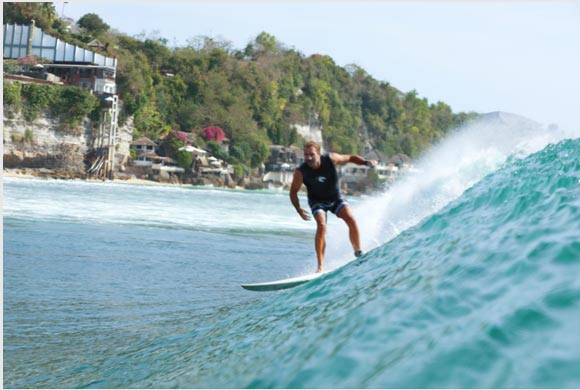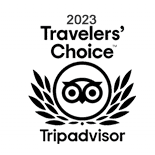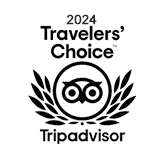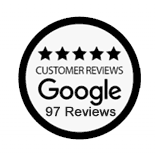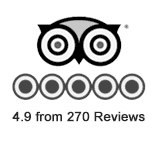WHAT SURFBOARD SHAPE IS RIGHT FOR YOU?

WHAT SURFBOARD SHAPE IS RIGHT FOR YOU?
It’s no longer mainstream to ride only high-performance shortboards. In fact, it’s no longer mainstream to ride anything mainstream. Today, at any given lineup you will, of course, find your standard shortboards, but you will also be met with a plethora of fun size crafts, grovelers, twin fins, stand up paddle boards, soft tops, and even foils. The recent eruption in popularity of the alternative surf craft has done wonders for the advancement of fun, which is what surfing is really all about.
There’s no point in trying to force your 6’0” leaned out thruster to go on a two-foot day. There’s no fun involved in stomping repeatedly down the face of a wave with your front foot, only to have the wave close out on you because you couldn’t make the section. Riding boards that are designed for the waves you’re actually riding will increase your fun levels tenfold, especially when you have the ideal board for your skill level.
LONGBOARD
 A longboard is anything 9 feet and over. Traditionally, longboards have single fins, but now it is common to see longboards with a “two plus one” set up. Meaning two thruster style fins with a traditional large single fin in the middle.
A longboard is anything 9 feet and over. Traditionally, longboards have single fins, but now it is common to see longboards with a “two plus one” set up. Meaning two thruster style fins with a traditional large single fin in the middle.
Longboards are truly an every man’s tool. All surfers start out on them, they’re excellent for learning. But plenty of advanced surfers choose to ride longboards as well.
SKILL OF RIDER
As previously mentioned, longboards are the perfect option for beginners. Ideally, a first-time surfer will start out on a soft top, and then progress to a traditional longboard. Longboards are also a great option for advanced surfers who enjoy cruisy rides and want to improve their style. Nothing is more stylish than a skillful long boarder cross stepping his or her way to the noise of their board.
OPTIMAL WAVE TYPE AND SIZE
While a truly talented longboarder will take out their trusty log no matter if its 6 inches or 6 feet, most of us turn to longboards when the surf is just a bit too small for a traditional shortboard. Longboards make even the most petite swells enjoyable and riding a longboard (or any board that will increase your wave count) will help improve your understanding of wave mechanics.

WHAT TO EXPECT While riding a longboard, you can expect long, cruisy, drawn-out lines. You will also have the ability to catch and ride small waves that would otherwise be considered uncatchable.
LONGBOARD SURFING VIDEO
FUN SHAPE

Fun shape boards are called fun size for a reason, they make what would be otherwise dull surf amusing. A fun size board is high in volume, wide, and has thick rails. A fun size board stands anywhere from 6’6” to 8’6” in height. One of the most popular fun size shapes is the egg shape, which is often called the “mini-Malibu for its similarities to a longboard.
SKILL OF RIDER
Fun shape boards are a great option for beginner surfers who are looking to progress towards a smaller board. If you have mastered the popup and you can ride clean lines down the face of the wave, then a fun size board will be a great fit for you. Similar to longboards, fun shape boards will give intermediate and advanced surfers a thrill on relatively small days.
OPTIMAL WAVE TYPE AND SIZE
As stated earlier, fun size boards can make a relatively small wave day a lot of fun. That being said, there are a select number of surfers who ride mid-size boards on hollow, barreling days.

WHAT TO EXPECT
Fun size boards offer a similar feel to longboards, with a bit of added performance. Long cruisy rides are met with increased maneuverability that is made possible by the reduced length of the board. Fun size boards offer beginner surfers a chance to begin to learn to carve and turn in the same vein as you would on a shorter board, while still providing plenty of stability.
GROVELER
 A groveler may appear to be just a standard shortboard, but upon closer inspection, you will find that a groveler is typically shorter and stubbier than the average high-performance shortboard. What this means is that while grovelers may be ridden at a reduced length, they have an increased width, thickness, and therefore more volume than normal shortboards.
A groveler may appear to be just a standard shortboard, but upon closer inspection, you will find that a groveler is typically shorter and stubbier than the average high-performance shortboard. What this means is that while grovelers may be ridden at a reduced length, they have an increased width, thickness, and therefore more volume than normal shortboards.
SKILL OF RIDER
A groveler should be part of every surfer’s quiver, whether they are just starting out or they are a sponsored pro. Grovelers serve as a longboard replacement during the small waves of the summer season or any small day for that matter. The increased volume in a groveler allows the board to paddle easily and catch virtually any sized wave. Grovelers are also a great stepping stone for beginner/ intermediate surfers to advance their surfing. The high volume of a groveler will provide more stability than a high-performance shortboard, making them a valuable step in surf progression.
OPTIMAL WAVE TYPE AND SIZE
Grovelers excel in small waves. 2-4 feet is where you will get the most out of a groveler. Most grovelers are too thick to perform well on large waves with steep faces. There are a few exceptions of course if a groveler has a slight entry rocker and a thinned-out tail (such as the Hypto Krypto by Hayden Shapes) then they may be able to perform in larger surf.

WHAT TO EXPECT
As stated above, a groveler will make mushy, small surf more enjoyable. The increased volume allows you to catch more waves with ease. The relatively flat rocker of a groveler gives the board plenty of speed through flat/ closeout sections that would otherwise be difficult to get around. Grovelers will be a tad more cruisey than a high-performance shortboard but will still offer the necessary thrills of performance when the surf is less than ideal.
FUN SHAPE / MID LENGHT SURFING VIDEO
FISH
 The fish is an immensely popular shape that has been around since the 1970s. Fishes have a few defining characteristics that separate them from normal shortboards or grovelers. The most notable characteristics of a fish are the wide swallowtail and the twin fin (often keels) set up. Fishes also tend to have a lot of volume under the chest and somewhat flat rockers.
The fish is an immensely popular shape that has been around since the 1970s. Fishes have a few defining characteristics that separate them from normal shortboards or grovelers. The most notable characteristics of a fish are the wide swallowtail and the twin fin (often keels) set up. Fishes also tend to have a lot of volume under the chest and somewhat flat rockers.
SKILL OF RIDER
Like the groveler, the fish will bring an ample amount of fun to any surf session. The classically drawn outlines of the swallow-tailed twin fin are some of the most stylish in surfing, making fishes popular with intermediate and advanced surfers. That being said, the fish has similar characteristics to the groveler, making it an equally as viable option for progression for those beginner/ intermediate surfers who are looking to improve.
OPTIMAL WAVE TYPE AND SIZE
Similar to any groveler, a fish will turn any small day session into something to remember. Few surfers choose to ride fishes on large days, in part due to their large wide noises, which make steep drops challenging.
FISH SURFING VIDEO
WHAT TO EXPECT
On a fish, you can expect long cruisy lines, plenty of speed, and a loose, skatey feel. A fish may not be able to bank turns like a high-performance shortboard, but when they’re ridden well they sure are fun to watch.
HIGH-PERFORMANCE SHORTBOARD
 High-performance shortboards vary in size from about 5’4” to 6’8.” They are designed for one thing and one thing only, to turn on a dime and make the absolute most out of the open face of a wave. A good high-performance shortboard will allow surfers to fit as many turns possible into a wave while maintaining speed and control.
High-performance shortboards vary in size from about 5’4” to 6’8.” They are designed for one thing and one thing only, to turn on a dime and make the absolute most out of the open face of a wave. A good high-performance shortboard will allow surfers to fit as many turns possible into a wave while maintaining speed and control.
SKILL OF RIDER
High-performance shortboards have thin rails, pointed noises, and low volume. They take time and patience to master, meaning that only advanced surfers will truly have a good time on them.
OPTIMAL WAVE TYPE AND SIZE
There needs to be a bit of size for a high-performance shortboard to truly shine. If the surfer is 4 feet or over, then it is time to grab your trusty shortboard.
WHAT TO EXPECT
High-performance shortboards are generally thin, with low rails, and rockered out. This gives them the ability to turn on a dime and carve up and down the face of a wave with ease. If you’re riding a high-performance shortboard for the first time, expect to work a lot to generate speed and set up each manoeuvre, but know that if you get that cut back just right, it will feel amazing.
WHAT SURFBOARD SHAPE IS RIGHT FOR YOU?
There is no right or wrong in the surfboard shape you choose, our advice is to try out the different surfboard shapes in various conditions and see which one suit your style and surfing ability best. Or don’t choose and mix and match boards to the right conditions or state of mind you are into. Some days are better for glide or speed, others are better for a high-performance approach. Whatever you do, make sure to have fun, since that is essentially what surfing comes down to.; putting a smile on your face.
At Swell, we have an extended surfboard rental pool for people that already know how to surf and don’t want to travel to the Dominican Republic with their surfboard. Our range exists of 25+ boards ranging from 5’10’ fishes to 9’6′ performance longboards and everything in between. Never surfed before? Have a look at the learn to surf and surf coaching packages we offer Surfboards for beginners we have too. Links and resources: Mollusk surfboards sell some of the best looking ‘alternative’ surfboards. Channel Islands is one of the leading manufacturers of high-performance shortboards
QUESTIONS
-
HOW DO FIN SETUPS AFFECT SURFBOARD PERFORMANCE?
Different fin setups dramatically impact how a surfboard performs in the water. Single fin setups (common on longboards and eggs) provide smooth, flowing rides with less drag but limited maneuverability. The classic 3-fin thruster setup, invented by Simon Anderson in the 1980s, offers the best balance of control, speed, and maneuverability for most conditions. Fish boards typically use either 2 large "keel" fins or a 4-fin setup, which provides speed and drive in smaller waves. Quad (4-fin) setups generate more speed and work well in both small and large waves, while offering a looser, more skateboard-like feel compared to thrusters.
-
WHEN SHOULD I CONSIDER USING A MINI-GUN OR STEP-UP SURFBOARD?
A mini-gun or step-up surfboard (6'6" to 8'0") is designed for bigger waves and more challenging conditions. These boards are longer than shortboards but narrower, typically featuring a round or pin tail for increased speed and control. They're primarily used by experienced surfers in locations with fast, powerful waves like Australia, Hawaii, and Indonesia. If you're surfing consistently overhead waves with significant power, a step-up board can provide the stability and paddle power needed for these conditions.
-
HOW DO I KNOW WHAT SURFBOARD VOLUME IS RIGHT FOR ME?
The right surfboard volume depends on your weight, fitness level, and surfing ability. Higher volume boards provide better flotation and wave-catching ability, making them ideal for beginners and intermediate surfers. Lower volume boards offer more maneuverability but require better technique and fitness. When choosing a board, prioritize catching lots of waves over looking cool with a smaller board - wave count is key to improving your surfing skills.
-
WHAT MAKES LONGBOARDS BETTER FOR LEARNING TO SURF THAN SHORTBOARDS?
Longboards (9'0" to 9'6") are superior for learning because they offer exceptional wave-catching ability and stability due to their high volume and length. Unlike shortboards that require precise technique and timing, longboards provide a forgiving platform that allows beginners to focus on fundamental skills like paddling, positioning, and standing up. The extra foam and surface area make it easier to catch waves in various conditions, and the stable platform reduces the learning curve significantly. Many learning-focused longboards also feature soft EVA deck padding for added safety and comfort during the learning process.
-
SHOULD I BUY OR RENT A SURFBOARD WHEN STARTING OUT?
Renting or borrowing surfboards is highly recommended when starting out, as it allows you to experience different board types and find what works best for your style and ability level. Visit multiple surf shops and speak with experienced surf shop owners or local shapers - be honest about your goals and current skill set. This hands-on approach helps you avoid expensive mistakes and ensures you choose the right board when you're ready to purchase. There's no one-size-fits-all solution for surfboards, so testing different options is crucial.
-
WHAT'S THE DIFFERENCE BETWEEN A SHORTBOARD AND A FISH SURFBOARD?
A shortboard (5'8" to 6'8") is the standard performance board that evolved from fish surfboards in the 1980s. It features 3 or 4 fins and is designed for advanced surfers wanting quick maneuverability and speed. A fish surfboard (5'2" to 6'4") is typically ridden 6 inches shorter than a standard shortboard but is wider and thicker with more volume. Fish boards have a distinctive swallow tail and work exceptionally well in smaller, mushier waves while being easier to paddle than regular shortboards.
-
WHAT TYPE OF SURFBOARD SHOULD A BEGINNER CHOOSE?
Beginners should choose a longboard (9'0" to 9'6") or mini-mal (7'6" to 8'2") with high volume and stability. These boards offer excellent wave-catching ability and are often covered in soft EVA deck material for safety. The key is being honest about your fitness level and surfing ability - avoid the temptation to buy a shortboard too early, as insufficient volume will make it much harder to catch waves and slow your progression. Remember: if you can't catch the wave, you won't improve your riding.
-
WHAT WAVE CONDITIONS WORK BEST FOR DIFFERENT SURFBOARD TYPES?
Each surfboard type is optimized for specific wave conditions. Fish surfboards excel in smaller, mushier waves where their width and volume help generate speed, though they can also perform well in larger surf. Shortboards work best in steeper, more powerful waves that allow for quick, sharp maneuvers and high-performance surfing. Longboards and mini-mals are ideal for smaller, less steep waves where their glide and wave-catching ability shine. Mini-guns and step-ups are specifically designed for bigger, faster waves where extra length provides the paddle power and speed needed to catch and ride powerful surf safely. Hybrid boards offer versatility across a wider range of conditions, making them excellent all-around choices.
-
WHAT IS A HYBRID SURFBOARD AND WHO SHOULD USE IT?
A hybrid surfboard (6'6" to 7'2") is an "in-between board" that combines the maneuverability of a shortboard with the wave-catching ability of a larger board. It's essentially a scaled-up version of a standard shortboard - wider with more volume to make paddling and wave catching easier. Hybrid boards are perfect for intermediate surfers wanting to transition from a larger board to a shortboard, offering a good all-around performance.
SURF VIDEO SURFBOARD TEST
Interested in changing your life to see the health benefits of learning to surf?
-
WHERE IS SWELL LOCATED?
Swell Surf camp is located on the North coast of the Dominican Republic, right in the center of the cool surfer town of Cabarete. With 3 international airports to choose from it's also one of the easiest places to get to for a quick surf getaway. Puerto Plata Airport is only 25 minutes away from Swell. On the' getting here' page you'll find the different options of getting to us.
-
ABOUT SWELL SURF CAMP
Founded in the winter of 2009, Swell Surf Camp emerged from Jeroen and Clare Mutsaars vision. They lived in the Dominican Republic for eight years and spotted a gap in the surf camp market for higher quality accommodations combined with an engaging social atmosphere. Their extensive travel and stay experiences across different countries like Costa Rica, Nicaragua, Peru, Hawaii, Indonesia and various European nations fueled their passion to elevate the surfing retreat experience.
Swell Surf Camp is renowned as the world’s first luxury surf camp tailored specifically for beginners. The founders collaborated with a notable Swiss architect to design facilities that blend comfort with style. This innovative approach ensures every guest enjoys superior lodging and amenities. Since its inception, Swell has taught over 9,000 people how to surf with an emphasis on safety, fun, and structure.
Our achievements speak volumes. Swell has collected numerous accolades and maintains hundreds of stellar reviews from guests globally. Recognized repeatedly as the leading destination for luxury surf vacations, our commitment to excellence keeps us at the forefront of the industry.
Beyond surfing, Swell offers a diverse range of activities including kitesurfing, wingfoiling, and yoga classes. Guests can also enjoy horse riding both on scenic beaches and mountain trails—plus exciting adventure-filled excursions like canyoning.
A crucial element of any vacation is food, and here at Swell we excel. We provide delicious home-cooked meals daily. For evenings out, guests find themselves just minutes away from an array of dining options that promise satisfying culinary adventures.
For those who prioritize upscale amenities and wellness in a unique setting built around learning surf skills amid profound natural beauty, Swell should be on the top of your surf destination list
-
WHAT TO EXPECT FROM A 1 WEEK LEARN TO SURF HOLIDAY
Dreaming of catching your first wave but wondering if surf lessons are really for you? At Swell Surf Camp, our lessons are designed specifically for beginners, and we mean absolute beginners, particularly those between 40 and 55 from cities like New York, Boston, or Toronto. You’ll never feel rushed, lost, or out of place. Our expert instructors genuinely love teaching, and their approach is as much about encouragement as it is about skill-building. Every instructor carefully tunes each lesson to fit one person, you, so you always get personalized support, whether you’re working on basic paddling, learning to pop up, or building confidence in the water.
The journey at Swell Surf Camp is about progression, not perfection. You’ll start with the very basics, practicing on the sand before moving into gentle ocean waves with your instructor right beside you. Throughout every lesson, our focus is on clear communication, safety, and keeping things fun. As you progress, our instructors give you feedback in real-time, helping you celebrate small wins and guiding your next steps. You’ll learn solid surfing foundations, water safety, and even the unwritten rules of surf culture. By the end of your stay, you’ll be amazed at your own growth and how natural surfing feels. Don’t wait to discover how transformative a single lesson can be, book your surf adventure at Swell Surf Camp and let your surfing journey begin!
-
WHAT SPORTS DOES SWELL OFFER?
It's not only surfing that's on offer at Swell, we also offer learn to wingfoil and learn to kitesurf packages.

